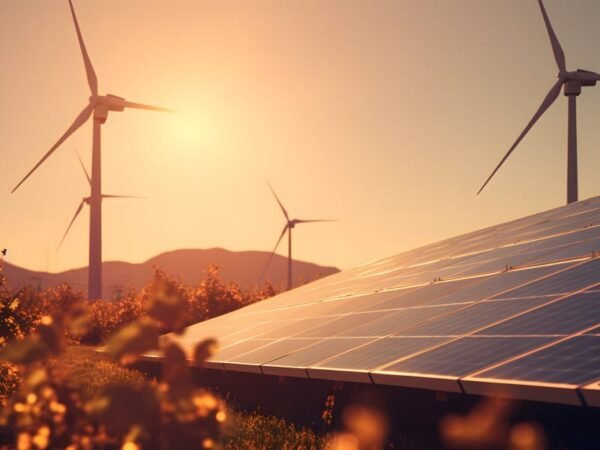In Short : The largest biannual addition ever recorded, 22 GW of renewable energy capacity, was added by India in the first half of 2025, marking a historic milestone. This acceleration highlights the country’s increased efforts to move toward a green economy and the energy transition.
Drivers and Capacity Breakdown
Solar Power: leading the increase with 18.4 GW added.
Wind Energy: 3.5 GW installed, with rapid expansion.
Bioenergy: derived from plant and animal waste, 250 MW.
The spike is 57% more than the 14.2 GW additions in H1 2024. The Interstate Transmission System (ISTS) charge waiver, which began at 25% and was set to phase out by June 2028, was a crucial support mechanism. The policy encouraged quick deployment and reduced project expenses.

Impact of Clean Energy and Structural Trends
India is still on track to meet its target of obtaining 50% of its energy from clean sources thanks to these developments, which have increased the country’s total installed capacity for renewable energy to almost 234 GW (including large hydro).
However, fossil fuels continue to be a major source of electricity generation, accounting for around 75% of power output in H1 2025. With the commissioning of a new 700 MW reactor and the approval of the nation’s first compact modular reactor for development, nuclear generation is also growing.
Additionally, battery energy storage is becoming more popular:
2.2 GW of standalone BESS and 5.4 GW of solar + BESS systems were granted.
This represents India’s largest BESS allocation to date, promoting clean energy stability and grid integration.
The Significance of It
• India’s position in the global energy transition is improving as its clean energy capability accelerates.
• The use of wind farms, biofuels, and rooftop and ground-mounted solar PV is outpacing infrastructural standards.
This growth path is in line with national climate goals, such as decarbonization, net-zero targets, and creating a strong green economy, but it also emphasizes the continuous difficulty of lowering reliance on fossil fuels in actual generation. Record-setting battery energy storage allocations emphasize a priority on energy efficiency, reliability, and resilience.




